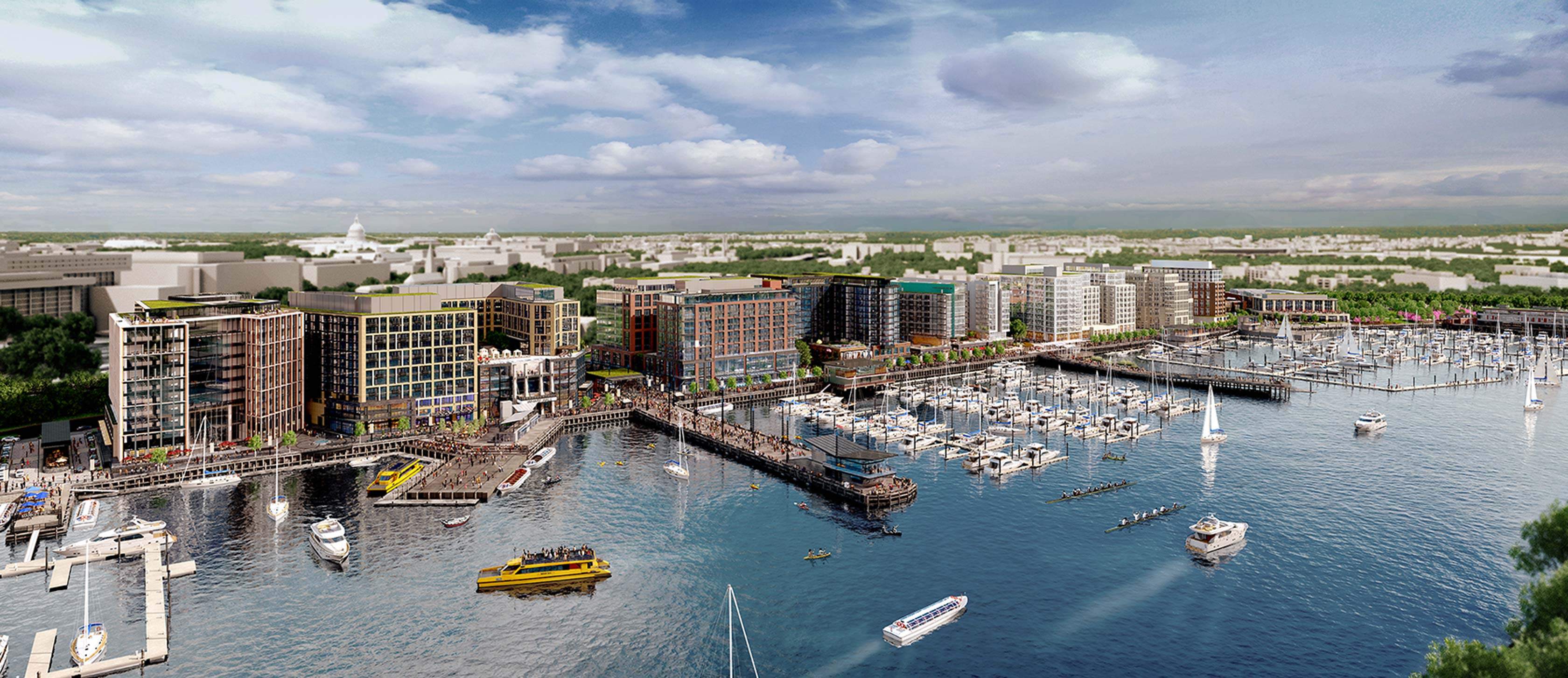Two weeks ago, phase one of the District of Columbia’s Wharf revitalization project in the southwest quadrant of the city opened to the public. The project, which has been labeled “the biggest development in D.C.’s history,” includes plans to construct a marina, a concert venue, restaurants, residences, and other businesses in two phases, the second of which is projected to be completed by 2022. The Wharf project illustrates many of this editorial board’s concerns with the current state of District politics, including allegations of corruption, an inability to react to the area’s housing crisis, and ongoing gentrification in the city.
A 2013 investigation by local radio station WAMU into recent District property sales found that the land used for the Wharf project was formerly public land valued by appraisers at roughly $95 million but was sold to Paramount Development Corporation for a meager $1. On top of charging less than market price for the land, the D.C. government provided the company an additional $200 million in public subsidies and tax breaks. Paramount is run by Ben Soto, the campaign treasurer for both former Mayor Adrian Fenty and incumbent Mayor Muriel Bowser.
These two themes—the undervaluation of property and political connectedness of developers—are consistently seen in the District’s handling of contracts for development projects. The property for these projects is often exchanged with developers at prices drastically under the market-rate, at times on the order of tens of dollars to millions of dollars as in the case of the Wharf property, and the companies awarded contracts by the District regularly donate hefty sums of money to public officials. According to WAMU’s investigation, the five largest giveaways by the D.C. government, in terms of property sales to development companies under appraised prices, have been granted to the five corporations that donated the largest amounts of money to the political campaigns of D.C. public officials over the past decade.
We have previously written about the Bowser campaign’s questionable financial connections to developers accused of acting as slumlords, with Soto playing a large role in many of our concerns. We are extremely concerned about Soto’s ownership of the company granted the Wharf contract, which at best reflects issues with the city’s current system of political campaign contributions and at worst exhibits clear corruption on the part of the D.C. government.
This editorial board also finds the Wharf’s final sale price to be borderline insulting to the residents of southwest D.C., especially in light of the ongoing affordable housing crisis occurring across the city. Adding the Wharf’s property valuation and the public subsidies provided to Paramount for the land’s development totals hundreds of millions of dollars in funds that the District could have generated with the property.
A study released by the D.C. Fiscal Policy Institute last year explained that over 80 percent of low-income families in the city pay an unaffordable price for their housing. Even if the land given to Paramount for the D.C. Wharf was not itself used to build more affordable housing options, acquiring something even marginally closer to the market-rate price than the absurd sale price could have provided funding to be reinvested throughout the city. For a city facing a shortage of affordable housing options, giving away such a large amount of money that could have been used in a more effective manner seems startlingly misguided.
The $200 million in subsidies provided to Paramount is a particularly ineffective use of public money. Out of the full 74 acres of land and water space developed in the Wharf project, only ten are allotted as public space. In the view of this editorial board, the trend around this country of using public money to fund private investments is dangerous, and city governments and their citizens should be extremely wary of such projects.
Additionally, developing the D.C. Wharf will contribute to the process of gentrification in the southwest quadrant of the District. Today the city is seeing the most construction activity it has in decades, but the D.C. Fiscal Policy Institute study notes that the city’s investments are “not targeting the households in the greatest need.” The value of properties surrounding the Wharf will rise by virtue of the development, eventually pricing out low-income homeowners and renters who reside in the general area of the project, many of whom are African-American. Considering the scarcity of affordable housing options that already exists and the trend of gentrification that occurred after the similar development of southeast D.C. during the construction of Nationals Park, the decision to price more low-income residents out of their homes is worrisome.
Development projects must be designed and implemented with the support of local communities, which according to Wharf area residents quoted in AFRO did not occur. The fact that local residents, especially poorer residents of color, feel unheard by the city is alarming and only contributes to the city’s ongoing gentrification crisis.
The myriad of problems surrounding the Wharf project reflect the current state of D.C. politics and housing policy. The city must change its approach to development projects if it hopes to improve the current state of affordable housing in the District.






[…] you heard that right. $1. Oh yeah, plus $200 million in public subsidies and tax breaks. That is an incredibly steep price to pay for just 131 […]